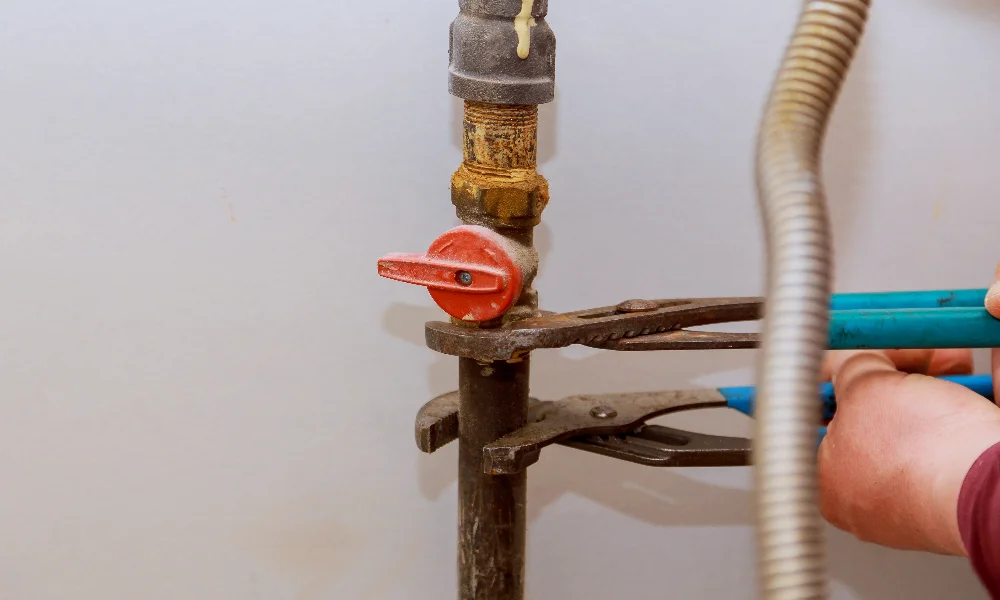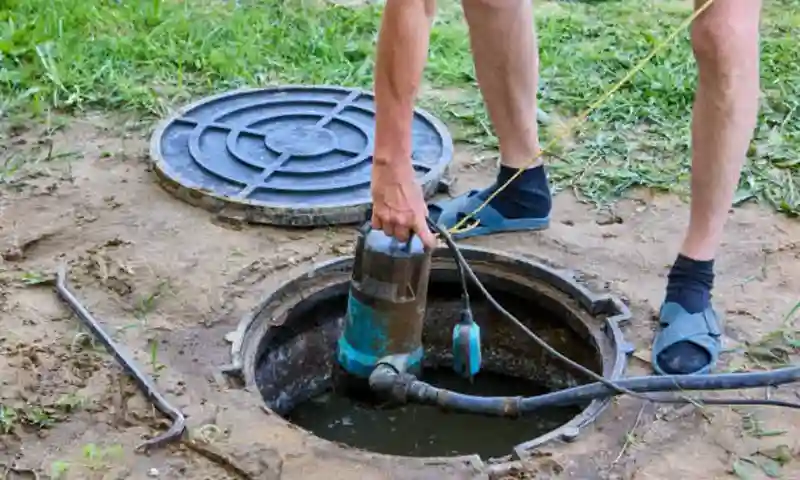
Natural gas powers many essential appliances in your home—from water heaters and stoves to furnaces and dryers. While it’s a convenient and reliable source of energy, it can also be dangerous when things go wrong. That’s why every homeowner should know how to turn off gas line systems safely and correctly.
How to Test a Sump Pump
Testing your sump pump may sound technical, but it’s pretty manageable. You don’t need to be a plumber to ensure your equipment is working correctly. All it takes is a little attention and the proper process. Here’s a breakdown of how do you test a sump pump safely and effectively.
Basic Steps for Testing a Sump Pump
1. Inspect the Sump Pump's Power Supply
First things first—ensure the sump pump is plugged in and receiving power. Check the outlet and circuit breaker. Many sump pump issues come from something as simple as a tripped breaker or a loose plug.
2. Check for Visible Clogs in the Pump
Unplug the sump pump and remove it from the pit if needed. Look for dirt, debris, or small stones that might be blocking the inlet screen. A clogged pump won’t move water efficiently and could overheat.
3. Test the Pump's Float Switch Mechanism
The float switch tells the pump when to turn on. Lift the float manually and listen for the pump’s motor to activate. If it doesn’t turn on, the switch might be jammed or broken. This is a vital part of every sump pump test.
Visual Indicators of a Working Sump Pump
If you’re unsure whether your pump is functioning correctly, here are a few key indicators to look out for.
Water Discharge
When testing with water, check if it’s being pushed out through the discharge pipe. A lack of water movement means something is wrong.
Pump Cycling On and Off
A healthy sump pump will cycle on when the float rises and turn off when the water level drops. Irregular cycling is a red flag.
No Water Back-Up
After running the pump, the basin should remain dry. If water continues to flow back into it, your check valve may need to be replaced.
Pump Movement
The pump should remain stable in the pit. If it shifts or tilts, it may fail to activate or could run dry, damaging the motor.
Common Signs of a Faulty Sump Pump
Even if your sump pump appears to be running, these signs indicate something could be wrong.
Strange Noises from the Pump
Grinding, rattling, or humming sounds may mean a damaged impeller or internal blockage. These issues shouldn’t be ignored.
Water Not Draining Properly
If the water level in your sump basin isn’t decreasing, your pump is either clogged, not powered, or defective.
Where to Pour Water to Test the Sump Pump
One of the easiest ways to evaluate your system is by simulating a flood. But where exactly should the water go?
Pouring Water Into the Sump Basin
Carefully pour a bucket of clean water into the sump pit. If the pump activates and drains the water, you’re in good shape. This simple step answers the question: how to test sump pump without water—or, in this case, with a controlled amount of water.
Best Locations to Simulate a Flooded Condition
Focus on the Area Around the Float Switch
The float switch should rise in proportion to the water level. Pour enough water to activate the float and start the motor.
Pour Slowly to Mimic Natural Water Flow
Don’t dump the entire bucket at once. Pour slowly to replicate how water would enter the pit during rainfall. This gives a more accurate sump pump test.
What to Do If Your Sump Pump Has Failed
If your sump pump fails during the test, don’t panic. Safety comes first.
Immediate Steps for Safety
1. Disconnect the Power Supply to the Pump
Unplug the unit or switch off the circuit breaker to prevent electrical shock or further damage.
2. Check for Electrical Hazards
Ensure there are no exposed wires or water sources near electrical outlets. If you see sparks or smell burning, call an electrician.
3. Remove Any Water Accumulation Around the Pump
Use a wet/dry vacuum to clear standing water. Mold and mildew grow fast, so dry the area promptly.
4. Ensure the Area Around the Sump Pump Is Dry
Keep towels or fans nearby to reduce moisture and prevent slipping.
5. Avoid Using the Pump Until It's Repaired
Running a faulty pump can cause it to overheat or blow a fuse. Stop and reassess before turning it on again.

Common Defects in Sump Pumps
Understanding what might go wrong helps you prevent major headaches down the line.
Mechanical Defects
Broken Float Switches
A worn-out float won’t rise properly, leaving the pump idle even as water rises. Replace it if it doesn’t trigger the motor.
Clogged Impellers
Debris can jam the impeller, making it hard for the pump to move water. Clean or replace as needed.
Electrical Issues
Faulty Power Supply or Wiring
Loose or frayed wires can cut off power, and power surges can blow internal circuits. Always inspect the cord and connections.
Defective Capacitor
The capacitor helps the pump motor start. If it fails, the pump won’t even hum. Capacitors can be tested and replaced by a professional.
How to Fix a Sump Pump
Some issues are DIY-friendly, while others are best left to a pro.
Simple Repairs You Can Do Yourself
Unclogging the Sump Pump Discharge Pipe
Use a plumber’s snake or water hose to flush out any dirt or buildup blocking the line.
Replacing the Float Switch
You can buy a replacement float switch at a hardware store. Follow the instructions or watch a video tutorial to install it.
When to Call a Professional
Some problems require an expert hand.
If the Pump Is Not Turning On
A completely dead unit could mean a failed motor or internal wiring issues.
When You Notice Strange Noises or Vibrations
These can indicate mechanical damage that requires specialized tools and skills.
If the Pump Is Running Continuously
This often means the float is stuck or the check valve has failed. Both can cause burnout.
When You Encounter Electrical Issues
Electrical faults are not worth the risk. Always call an expert to stay safe.
If the Pump Is Leaking or Not Discharging Water
Leaks may mean a broken seal, while a lack of discharge signals a blockage or impeller failure.
Call Wally Blanton for Sump Pump Repairs in Spring Grove, IL
Keeping your basement dry starts with a functioning sump pump. Regular testing can save you from costly water damage and stress. Now that you know how to test your sump pump, make it a seasonal habit.
Still having trouble? Wally Blanton Plumbing & Sewer is here to help. Whether your pump won’t start or it just sounds wrong, we’ll diagnose and fix it fast.
Visit Wally Blanton Plumbing & Sewer or call now for expert sump pump repairs in Spring Grove, IL. Don’t wait for a flood to discover your pump has failed—book your inspection today!
